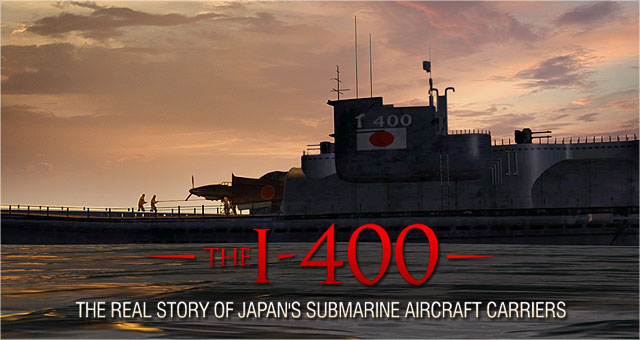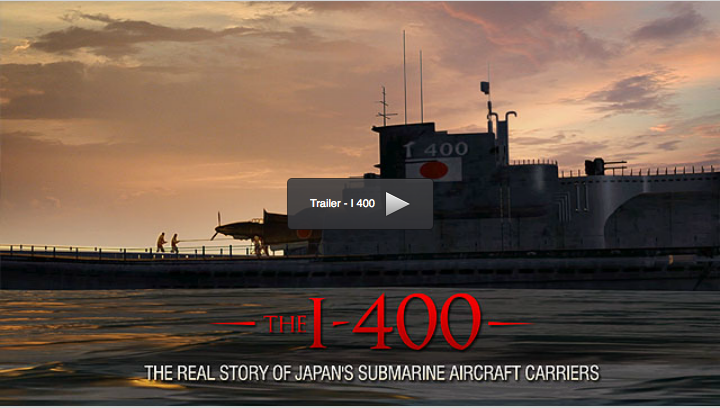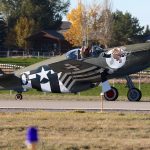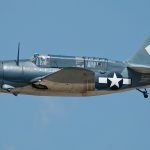
Sunday, December 7th, 2014 marked the 73rd anniversary of Japan’s devastating attack on Pearl Harbor – “A date that will live in infamy” – as U.S. President Franklin Roosevelt declared gravely at the time. Most people don’t realize how close the U.S. came to suffering another such ‘day of infamy’ during WWII. The Japanese planned to continue their strategy of taking the fight to American soil by developing a fleet of eighteen massive, aircraft-carrying submarines that could wreck death and destruction on the American west coast in surprise attacks. As the war turned against Japan, they reduced the scale of their ambitious plans and the number of submarines to four. Only two of these submarines, the I-400 and the I-401, ever entered service.
Even so, the Japanese had devious battle plans for those two engineering marvels; the largest submarines ever built until the 1960s. In a scheme that echoed the attack on Pearl Harbor, the Japanese set in motion an operation using the I-400, I-401 and two smaller submarines to launch their Aichi M6A Seiran aircraft in a surprise kamikaze attack against the locks on the Panama Canal. Had it worked, the attack could have heavily disrupted the flow of supplies and warships from the U.S. east coast to the Pacific. The Japanese named their plan ‘sen toku’, or ‘secret submarine attack’.
You can learn why that attack never happened and how the I-400 and I-401 ended up at the bottom of the sea in The I-400: Japan’s Submarine Aircraft Carriers, a feature film on the AeroCinema channel. The film takes an in-depth look at the fearsome submarines and how close they came to fulfilling their deadly intent.
AeroCinema is easy to set up, affordable, and—based on subscriber feedback—very addicting. If you’re an aviation lover, AeroCinema was created for you!
Full disclosure: WarbirdsNews is proud to have AeroCinema as one of its sponsors, and we are ardent fans of their work! We hope you will find them similarly impressive!


























